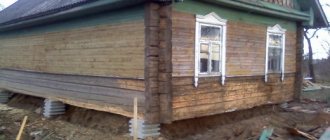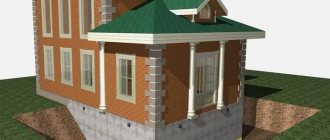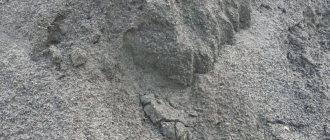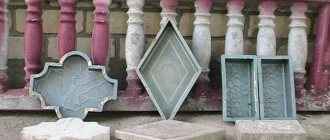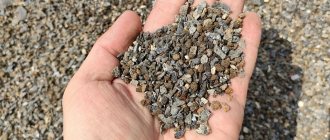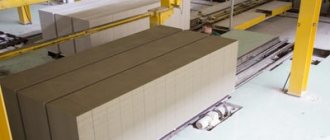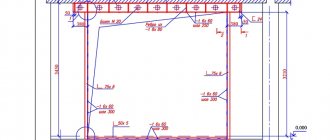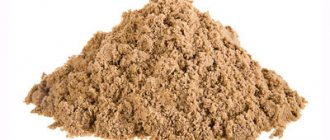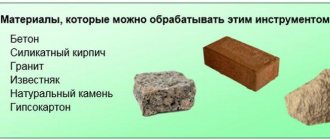Before applying a protective coating to a metal base, it should be thoroughly cleaned of old paints, rust, and other contaminants. For this purpose, cleaning with a sandblasting device is used. Its operating principle is as follows: a pneumatic device delivers small abrasive particles onto the base being treated at high speed, which soon leads to its cleansing. When using such equipment, it is important to be able to select the right consumables.
The use of sandblasting allows you to thoroughly clean a metal surface and prepare it for the application of paints and varnishes Source ego-npp.spb.ru
Differences in abrasives for sandblasting machines
Abrasives are materials with a high degree of hardness and are used to process various types of surfaces. All their types differ from each other in characteristics, such as:
- hardness;
- abrasive ability;
- fragility;
- dust formation;
- level of quartz content in free form;
- recovery (number of reuse cycles);
- average consumption for cleaning 1 m2;
- speed of operation;
- price;
- cost of work;
- conditions of use;
- scope of use.
Their types
For sandblasting, materials are used whose hardness is greater than that of the surface being treated. Their grain has cutting edges and acts like mini-incisors. Crushed mineral substances with high hardness are used as abrasives; they can be artificial or natural. There are several types of sandblasting materials.
Quartz
Sand for sandblasting equipment is distinguished by its quality, low cost and availability. To make it, white quartz crushed into fine dust is used. Quartz sand has several varieties depending on the grain size:
- dust fraction (0.1 mm);
- sand (from 0.1 to 0.4 mm);
- coarse sand (from 0.5 to 1 mm);
- quartz chips (from 1 mm).
The material has a number of advantages:
- does not contain foreign impurities and large fragments due to careful processing using several sieves;
- characterized by chemical homogeneity;
- has a high level of porosity.
The disadvantage is the negative impact on human health.
Important!
When working with quartz sand, crystalline dust released in large quantities may enter the eyes and respiratory tract.
Cooper slag, nickel slag
These materials are the waste left over from the processing of smelted copper and nickel. They contain quartz, the share of which is 1%. The advantages of nickel slag and cooper slag are as follows:
- high abrasive ability relative to quartz chips;
- strength and stability when interacting with sand, metal and concrete;
- high efficiency combined with low consumption;
- possibility of reuse.
Garnet (Pomegranate)
Such material is formed by force or naturally from natural rock. Garnet is mined in quarries, then purified and enriched. Its grains of sand are characterized by a rounded shape, which increases the resistance of the abrasive to damage. During its production from rock, it is destroyed and crushed to obtain the required fraction.
Corundum
The material is industrially produced aluminum oxide and has a distinct crystalline form. Corundum is considered one of the best due to its characteristics similar to diamond. As a rule, it is used for the purpose of decorative processing of metal surfaces. Abrasive has a high cost. Its advantage is that it can be reused.
Plastic granules
Plastic abrasives are a type of soft materials designed for delicate surface treatment. They are usually used for working with soft metals, wood, plastics, various alloys, ceramics or glass. The production of plastic abrasives is based on resins.
Glass granules
Glass beads are widely used in industry. The abrasive is widely used for the following purposes:
- delicate cleaning of various types of surfaces;
- processing of material without changing its color and physical characteristics;
- production of parts intended for galvanic operations;
- obtaining controlled withdrawal values necessary in mechanical engineering, instrument making, as well as in optical and watch production.
Important!
Glass granules are indestructible and can be reused up to 35 times.
Metal shot
Cast iron and steel are used to make these small metal balls. The use of such materials for sandblasting is quite beneficial due to the possibility of secondary use. The shot has a uniform fraction, which allows you to obtain a smooth, defect-free surface.
Design and principle of operation
A homemade sandblasting machine has a fairly simple design.
- A compressor, preferably powerful enough.
- A working container (cylinder) into which sand is poured.
- Branch pipe with a shut-off valve for adjusting the sand supply.
- Spray gun (nozzle).
- Connecting hoses.
Sandblasting diagram: 1 - air supply from the compressor; 2, 13, 15 — connecting tees; 3, 5 — air supply adjustment; 4 - pressure sensor; 6, 14 - pipelines; 7 — overpressure valve; 8 - dry sand; 9 — air supply control valve; 10 — rubber gasket of the filler neck cover; 11 — sand supply adjustment valve; 12 — sand container; 16 — air supply with sand to the nozzle; 17 — filling neck; 18 — filler neck cover.
It all works very simply.
- Two pipes are inserted into the working container. The top one is for connecting to a compressor to create excess pressure inside the cylinder. The lower one is for supplying sand. To regulate the flow intensity, a tap is inserted into this pipe.
- The air flow from the compressor is divided into two parts: one goes into the upper pipe of the cylinder to pump pressure inside, the second is connected to the lower pipe to create an air-sand mixture at the outlet.
- From the lower nozzle, a mixture of sand and air under pressure is supplied to the spray gun or nozzle.
It all looks not too complicated and is quite accessible for self-assembly.
Features of abrasives used for processing
When choosing a material for sandblasting a surface, it is necessary to study its characteristics in detail.
Fraction
Fraction is the size of particles used to treat various surfaces. When crushing certain components using a press, fine crumbs are obtained. Subsequently, it is sifted through sieves with different cell sizes, which determine the fraction. When choosing this indicator, it is necessary to take into account the characteristics of the surface being processed: condition and material of manufacture.
Important!
To clean thick layers of plaque, a coarse fraction is used, and a fine fraction is used for finishing work.
Hardness
The ability of particles to maintain their integrity during processing directly depends on this indicator. The hardness degree is numbered in ascending order. For example, soft materials are designated by the number 1, hard materials by 10.
Abrasive ability
The packaging of the material indicates the period of time it will take to clean a certain surface area.
Mechanical stability
This indicator is used to indicate the degree of resistance of particles to destruction during processing. A high degree of mechanical stability indicates the possibility of repeated use of the same abrasive; a low degree indicates the opposite.
Chemical resistance
The indicator indicates the level of resistance of particles as a result of prolonged contact with acids, alkalis and similar compounds.
Which consumables are best to choose?
When choosing consumables for sandblasting, you need to take into account the characteristics of the surface for which it is intended to be processed. In this case, it is necessary to familiarize yourself with the specifics of using certain types of abrasives:
- Shot blasting. This method is economical and also effective due to dust suppression systems.
- Quartz. A material that is quite common due to its low cost and availability. Used to treat a wide variety of surfaces. When working with it, you must take care of the appropriate equipment.
- Nickel slag. The use of this abrasive allows you to obtain high-quality results. However, due to its high cost, it is purchased mainly for finishing surfaces made of expensive materials.
- Cooper slag. The material is well suited for working in open conditions.
- Metal shot. Makes it possible to initially imagine the final result after processing. This quality is due to the uniform surface of the abrasive. In addition, it increases the degree of adhesion of the material.
- Steel and cast iron shot. Abrasives are used to clean metal from carbon deposits. A greater effect can be achieved using crushed shot.
- Corundum. It is considered the most durable compared to other materials and allows for reuse. Recommended for decorative work with metal parts.
When choosing sand for sandblasting equipment, you also need to take into account the area of the surface being treated and its condition. Working with large fractions can damage the workpiece.
What can sandblasting be made from?
Craftsmen make sandblasting machines on their own, using very convenient metal cylinders, gas cylinders or those from large fire extinguishers. Their metal lends itself well to welding, holds pressure and lasts almost unlimited time.
Also, to get a sandblasting installation, you can use devices similar in operating principle: a high-pressure washer, a spray gun, a blow gun.
- Sandblasting, made from a Karcher sink, works with a mixture of sand and water. A nozzle with a sand container is installed on the outlet tube, and the standard tip is replaced with a ceramic or metal nozzle. To connect the sand supply, you will need a tee, which will work as a dispenser and mixing unit. The main disadvantage is working with water, which seriously limits the scope of sandblasting. And the advantage is that everything is already ready, all that remains is to add sand. And, of course, this is the only device that does not produce dust during operation.
- The spray gun is an almost ready-made installation; you just need to put a container with sand instead of a paint can and sharpen the gun to fit the nozzle of the required diameter. To do this, a mixing tee is installed on the valve, into which the air supply pipe is connected. It is quite convenient to work with such a device, but its main disadvantage is that it will then be impossible to use it as a spray gun.
- To make sandblasting from a blow gun, you need a minimum of work: everything is already ready, you just need to install a tee on it with a connection to a container with sand and an outlet nozzle. It is clearly shown in the video below.
In all three cases, the ejector principle is used to supply sand: a low-pressure area is created next to a fast flow of air (or water). Sand is drawn into it from the container. If none of the listed devices are at hand (or are, but they themselves are needed on the farm), you can make sandblasting from available materials.
How to make abrasive with your own hands at home?
In some situations, it is not possible to purchase sand in a store. In this case, you can prepare the mixture for sandblasting on your own. It is permissible to take gravel sand as a basis; the manufacturing process includes several stages:
- preparing 2–3 sieves, made independently from a wooden frame and mesh with small cells;
- sifting sand to remove foreign debris;
- sifting to the desired fraction;
- drying the mixture after obtaining the required grain sizes;
- control sifting after drying using a fine sieve.
Can sandblasting be done with regular sand?
Sand is a sedimentary rock of natural origin or an artificial material created from it. Despite the permissibility of using ordinary sand for sandblasting equipment, it is impossible to perform high-quality processing in this way. This is due to a number of reasons:
- leaving dust on the treated surface;
- ability to mask corrosion;
- content in the composition of salt deposited on the workpieces;
- negative impact on equipment, contributing to the formation of blockages.
Important!
In the Russian Federation and Europe, legislation officially prohibits the use for sandblasting of sand whose free quartz content exceeds 1%.
The use of ordinary sand is an uneconomical solution, since the material quickly becomes unusable and cannot be reused. Surface treatment using sandblasting technology is considered an effective method for getting rid of corrosion, scale and various contaminants. To achieve a positive result, the main thing is to choose the right material for the equipment.
What is sandblasting?
How to clean metal from rust, scale, layers of old grease, carbon deposits? What if it’s not metal, but wood or concrete? Special chemical cleaners cannot be used everywhere and not always, and you have to rub the surface with sandpaper, metal brushes, and then admire the network of small and not very scratches.
An alternative to this treatment is sandblasting. With its help, you can remove various contaminants from the surface without any problems, and the treated area is cleaned much faster and more efficiently, and dirt is removed even from porous materials (for example, wood or concrete).
Another option for using sandblasting machines is working on wood or glass. With certain skills, you can make magnificent stained glass windows with selective matting, engravings and relief patterns.
A sandblasting machine is a fairly simple device in principle. It gives a powerful stream of air mixed with abrasive (ordinary sand). It can be used to process large areas as well as complex parts with many small elements. The flow of sand perfectly removes any layers of dirt, oxides and carbon deposits, leaving a clean surface without scratches.
When you need a sandblasting machine regularly, but don’t want to buy it (most often for financial reasons), you can make it yourself.

